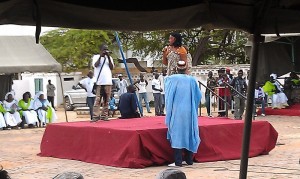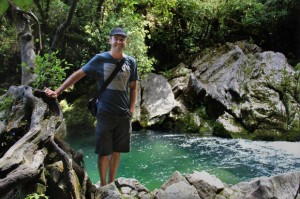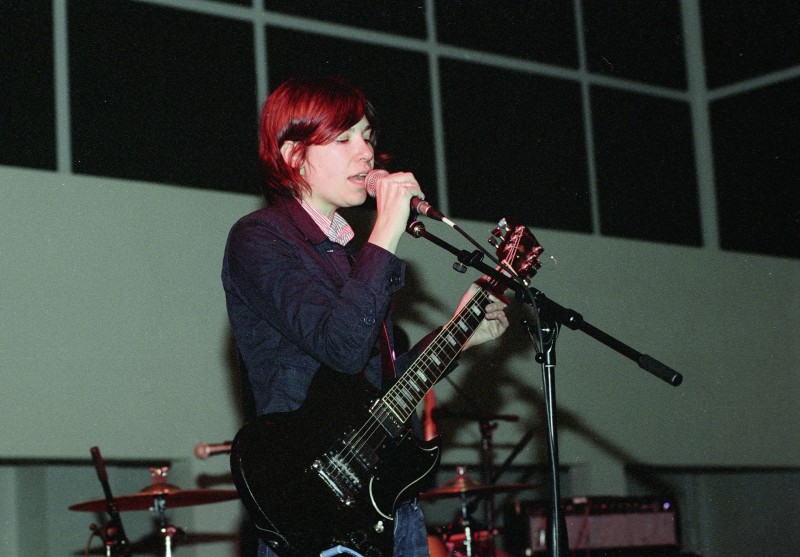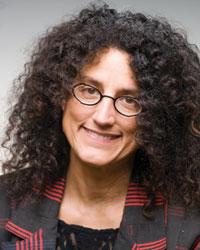 As the new year begins, The Olympian has appointed six new Board of Contributor members to write weekly columns for the paper’s editorial page, bringing community voices to the paper. Evergreen Alumna, Kathleen Rogers ’09, is one of the six new Board members. Rogers received a degree from Evergreen for creative writing and has been a registered nurse for the last 35 years. The Olympian has more on the story.
As the new year begins, The Olympian has appointed six new Board of Contributor members to write weekly columns for the paper’s editorial page, bringing community voices to the paper. Evergreen Alumna, Kathleen Rogers ’09, is one of the six new Board members. Rogers received a degree from Evergreen for creative writing and has been a registered nurse for the last 35 years. The Olympian has more on the story.
Author Archives: Dante Garcia
Dropping Gems – Greener inspired Electronic Music Collective
 When Aaron Meola graduated Evergreen in ’08 the local electronic music scene was promising, but not well organized, so he started a collective. Today Dropping Gems, Meola’s electronic music collective, has released 12 albums and is now gearing up to put their music on vinyl. The Portland Mercury has more.
When Aaron Meola graduated Evergreen in ’08 the local electronic music scene was promising, but not well organized, so he started a collective. Today Dropping Gems, Meola’s electronic music collective, has released 12 albums and is now gearing up to put their music on vinyl. The Portland Mercury has more.
Interview with Carrie Brownstein ’98 as Portlandia begins season 3
This week the Northwest ‘hip’ indie series, Portlandia, begins its third season on the Independent Film Channel (IFC). If you were around this area in the 1990’s, you might remember the show’s co-developer and co-star Carrie Brownstein ’98 as part of the riot grrrl band Sleater-Kinney.
David Blake, a Seattle Weekly blogger, interviewed Carrie about her very busy year – launching into the third season of a TV show and being a member of the super group Wild Flag. Below are the links to David’s interview with Carrie:
The Carrie Diaries – interview by David Blake
Part two of the Carrie Diaries – interview by David Blake
Macklemore | Layers of the story
Editors Note: Many of us know, or know the work of, branding and design expert Tim Girvin ’75. Fun fact: Tim is also a Macklemore fan. We asked Tim if he would review the latest Macklemore album. Here it is. Enjoy:
There’s a story in the story,
there’s a poem in the poem,
there is a place within the place.
In the realm of any study,
the student realizes that
there are layers to comprehension —
one understands the bare facts,
these become other degrees of
certainty and awareness.
“You think you know,
then you realize
you only know only
what you know.
Now.”
In Kyoto, Japan, at a famous Zen temple compound,
known as Ryoan-ji, there is a puzzle garden stone — it is a circle, squared.
The square in the center is a character — an ideographic kanji modifier.
The positioning of the square, in relationship to the character —
one on each side of the square, on the garden stone, forms a koan statement, which in its own way is a question. These characters offer — at the stone purification washing ritual — the tsukubai (蹲踞) (口) in Japanese, used for purifying the celebrant’s hands before entering the sacred place. The center of the face of the stone is scribed with the kanji for mouth, kuchi, and — added to the four kanji surrounding the basin —
they become 吾、唯、足、知, which is:
“you only
know what
you know,
now.”
This idea of knowing what you know, the knowledge of the now, reflects my experience seeing Evergreen graduate, and young Girvin family friend, Ben Haggerty, otherwise known by the name: Macklemore, at his Seattle performance.
I didn’t know.
I thought that I knew him —
but that was years back, another time,
at the beginning of the rippling of his talent.
I’ll personally confess that I know little about his musical form, hip hop.
But, I did know him as a young experimenter, music listener, childhood tent-builder and word + sound explorer — then, poet. And what I suggest to poetry is the passion of Macklemore — who, from his earliest days, [14] has been one to offer the warmth of his soulful, open-hearted gift of his intentions.
His music has been a calling to cause — from supporting gay marriage, sobriety, to local sports — and even a legendary voice, a sportscaster named Dave Niehaus [The Mariners — Seattle’s baseball team] — sung at opening day, 2011 in front of nearly 50,000 fans.
The potent impression of my experience, listening to him, was the sheer
exuberance and commitment to the power of his messages — a song, that is a poem, that is a story, within a story. Macklemore, since his beginnings, celebrates the power of community – those rippling circles of enthusiasts around him. That online fellowship has lent itself to millions of downloads of his songs — and, earlier this month,
his storytelling about “tag popp’in” thriftstore shopping,
“Thrift Shop” went platinum.
We all understand layers — insight, experience, intelligence, the mythic, if not psychic, layers of storytelling; “this is my story, but it’s another story, from 10,000 years ago, and it’s another story — that you just told me.
That story, is your story, is my story.”
There is an insight, when one is approaching anything —
you can see what you can see
(or know what you can know)
on the surface,
but what lies beneath?
That questioning,
that’s evergreen mind.
TIM | Decatur Island Studios
work: http://www.girvin.com
blog: http://blog.girvin.com/
Nancy Anderson, report from Senegal
Editor’s Note: Nancy Anderson received a Sponsored Research Grant this year to further her investigation in public health policy in Sub-Sahara Africa. Currently she is co-teaching, Public Health and Economic Development in Sub-Saharan Africa with Tom Womeldorff.
I spent seven weeks in Senegal during Summer 2012 working with PROMETRA International, based in Dakar. The overall mission of PROMETRA is to facilitate and promote the inclusion of traditional healers in the formal health systems throughout the continent of Africa. They received a substantial grant from Bill and Melinda Gates Foundation to carry out a survey of Immunization and Maternal-Child Health Knowledge, Attitudes and Perceptions among traditional healers and community leaders. They invited me to Dakar to review the study findings, undertake discussions with staff as well as traditional healers, and suggest considerations for further research.
While the field survey was complete by the time I arrived, extensive reports were still in draft status, translated from French in English by staff who were not entirely comfortable with English prose writing. I reviewed all available reports in both French and English, interviewed staff as well as senior management/directors, conducted a literature review, and completed extensive revision of the report (including review of data/results) into the English language in consultation with Dr. Erick Gbodossou, the president of PROMETRA International.
In addition, I visited a large traditional healing center in Fatick, interviewed traditional healers who had participated in the study, and visited a “western” community hospital to compare the practices germane to maternal child health in both settings. I participated in the dissemination campaign/march in the city of Dakar, a meeting where the results of the study were disseminated community-wide in an urban setting where community need for maternal-child health services is acute.

An image from a skit about traditional healers at the public dissemination meeting that discussed the study findings from the Gates Foundation funded study. Photo taken by: Nancy Anderson
A number of studies examining community uptake of vaccines have been performed in the developing world, and most have focused on issues of resources, infrastructure, and competency. In my analysis of the study results, I found that the PROMETRA study offered a unique perspective that has not been considered in previous research. Specifically, the significant differences between the endogenous definition of immunization and the “western” biomedical definition are an obstacle to community acceptance of vaccine programs and must be recognized before the target community will be entirely comfortable with the use of vaccines as a component of primary care. In addition, my consideration of study results indicates that the endogenous definition of immunization is in many ways more closely allied with the comprehensive World Health Organization definition of primary care than the biomedical definition. Finally, it is also apparent that the population at highest risk of death from vaccine-preventable disease is also in need of all of the other prerequisites for health and wellbeing. These include respect for endogenous culture and traditions as well as household food security. I have written a draft paper that highlights the findings that I consider most unique to this study, and it is attached electronically.
As important as anything I’ve written so far is what I learned (and not for the first time) about a small corner of Africa. Our newspaper headlines that consistently point the inky spectral finger at tragedy cannot possibly capture the sheer beauty and chaos of everyday life, the unmistakable, unforgettable, and overwhelming odor of ripe mangoes mixed with burning garbage, the resilience of humanity in the face of unimaginable challenges. It is a place that deserves everything and still gets too little. Thank you so much for the Sponsored Research grant, a chance to offer my modest skills and to get so much in return.
Marriage Equality Debate at the Evergreen State College
Evergreen has a wonderful Youtube channel, populated with a variety of footage from across the community, including our own Ted Talks and artist lectures.
Greeners launch website for non-profit donations
Two recent Evergreen graduates, Roderick Campbell ’11 and Jay Bolton ’11 were featured in The Olympian this week for their new web project, Commit Change.com.
Bezango, WA – a film honoring Northwest Cartoonists
Editor’s note: We caught wind that Ron Austin ’91 was making a documentary about Northwest artists, “Bezango, WA.” Recently we got hold of him and gathered a few of his reflections on cartoons and Evergreen.
Dante Garcia (DG): How did cartooning become such a big part of your life?
Ron Austin (RA): My parents never bought a television. I grew up in Seattle during the 1970s and 80s listening to The CBS Radio Mystery Theater, hosted by E.G. Marshall, and reading comics. That was my main source of entertainment. Archie comics and super hero comics were a huge influence, and so were the daily strips in the Seattle P.I. and The Times. I also read MAD Magazine and National Lampoon a lot. The artists behind those cartoons were like rock stars to me. I just assumed this is how everyone felt about comic artists.
DG: What role did Evergreen play in cartooning for you personally and culturally?
RA: Like many people who grew up in the 1980s, and lived in the Northwest, I read The Rocket (a weekly newspaper about music). As far as I remember Matt Groening and Lynda Barry appeared in every issue. So when I chose to go to Evergreen, because of their film studies program, I was also super excited to find out that Matt Groening and Lynda Barry were alumni. At that time in 1986 Matt Groening was just starting to become nationally known. The Simpsons were on the horizon.
Greener works on The Hobbit: An Unexpected Journey

Bellingham native Andrew Park, shown enjoying an outing in New Zealand’s Riwaka Valley, did animation work for the much-anticipated movie “The Hobbit: An Unexpected Journey.” Photo from the Bellingham Herald.
The Bellingham Herald recently highlighted Andrew Park ’03 as a local artist working on the animation for the new movie, “The Hobbit: An Unexpected Journey.”
The passing of Bonnie Evans
Retired staff member Bonita Evans passed last month. She worked in Academics at Evergreen for 14 years until her retirement in 2000. Bonita initially served as a program secretary before working for 10 years to support both the Master of Public Administration and Master of Environmental Studies programs. Bonnie is described by a colleague as, “a clear light of honesty, hopefulness and mirth [who] always had a smile and a good word…” Additional information can be found at her online Obituary.






